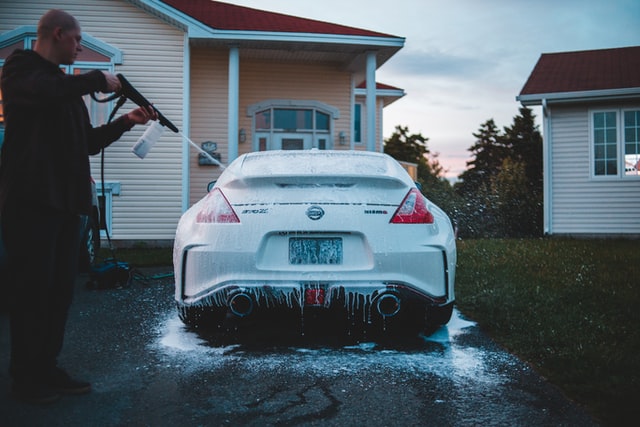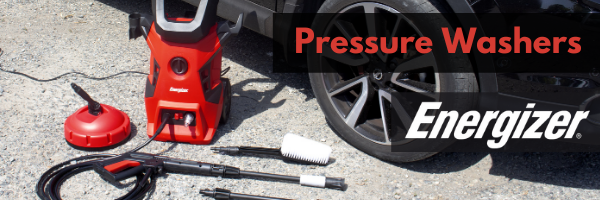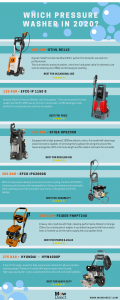What does PSI mean or stand for?
PSI stands for ‘pounds per square inch’. The PSI is the force of energy that water will hit when you are using the pressure washer for cleaning.
What does LPM flow rate mean or stand for?
LPM is a measurement of the water flow rate and stands for ‘litres per minute’. It measures liquids, such as water rate in machinery, such as a pressure washers or pressure washing machine tool accessory.
What does ‘Bar’ in pressure mean?
PSI for measuring pressure. Similar to PSI it is scale to measure a liquid’s flow rate and pressure. In every Bar there is 14.5 PSI. The Bar is the energy rate the water will hit when you are using the pressure washer for cleaning. The higher the Bar the greater the pressure. Pressure Washers tend to range from 100 Bar for domestic jet washers up to 500 Bar for professional machines.
How do I know the power of my pressure washer engine or motor?
Petrol and diesel pressure washer engines are usually measured in horsepower (HP). Electric Motor Pressure Washers are usually measured in kilowatts (kW). 1 kW = 1.341 horse power
What are the most important things to consider when buying a new pressure washer!
The most important factors you need to understand when looking at a commercial pressure washer and deciding which one you want, are…
1) Engine Type & Size – ( Petrol or Electric and it’s power)
2) The flow rate – LPM (litres per minute)
3) The pressure (PSI or Bar).
Overall the higher the two numbers on your pressure washer rating the more powerful the machine you have. If you want to use a multi-nozzle attachment, it is more important to opt for a pump with a higher flow rather than a greater pressure. For multi-nozzle use, insist on a pump specification with at least 13 LPM.

What else to consider when buying a new pressure washer once you’ve decided one the engine you want?
The most important factors you need to understand when looking at a pressure washer and deciding which one you want, after you’ve decided whether you want an electric, petrol or diesel model is the LPM and the Bar. The LPM is the flow rate of water in litres per minute that your pressure washer produces. Higher flow tends to wash away dirt, higher pressure tends to cut through tough dirt, so it all depends on the task it’s required for.
Comparing pressure washer machines’ output power
Looking just at the LPM and Bar figures of different machines is a difficult way of comparing them. A good way to give a rough indication of the performance of a machine is to use the blow equation:
LPM (Litres Per Minute) x Pressure in Bar, then divide this by 600.
The number can then be used to compare machines, the higher the number the more powerful the machine is.
Comparing industrial pressure washers’ output power
A powerful machine is not always the best option and other aspects should be considered. You can have two equally powerful machines but one is more expensive than the other.There may be an obvious reason for this, like one has a reduction gearbox and the other has a direct drive. Machines with reduction gearboxes between the engine and the pump will likely be more expensive than direct drive machines. The reason for this is it enables the pump to run at lower speeds, thus increasing the life of the innards of the pump, especially the seals. If there appears to be little difference in specification you’d at least expect the higher-priced machine to be built from higher-quality components that are going to last longer.
How much pressure do I need?
This is completely dependent on the type of work you’ll be doing. If it’s for car valeting then 125 Bar at 10 LPM is sufficient. If it’s driveway cleaning then 150-200 Bar at 14-15 LPM would suit. If it’s professional or industrial pressure washing work then anything up to 276 Bar.
How do I feed the water supply to my Pressure Washer?
Depending on the pump type fitted you will have a different option to feed water to your pressure washer. If its a direct drive pump with an output of 13 LPM maximum, it would be best to have a water supply with a positive displacement, eg. mains water tap. Direct drive pumps can overheat if they pump the water in themselves. If you have a geared pump fitted, the pump would prefer to draw water from a barrow or bowser. This way it can draw as much as it wants, and because the pump is running slower than a direct drive pump, it has a stronger suction. Generally speaking a geared pump will require more water in a minute than what a mains water tap can produce.
Can I feed my Pressure Washer hot water?
Depending on the brand and model of your pressure you may be able to feed hot or cold water. Not all pressure washers take on hot water. Feeding warm or hot water can be useful for certain jobs, such as de-icing a car.

If in doubt always speak to a professional adviser. [email protected]







